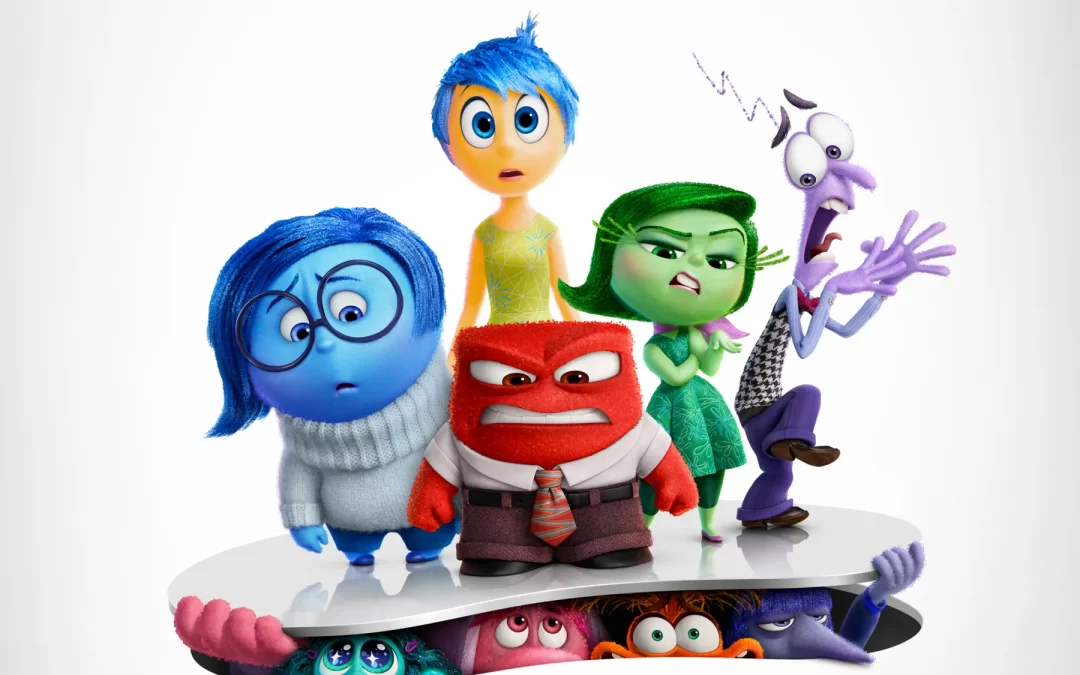Inside Out: A Psychologist’s Perspective on Pixar’s Emotional Masterpiece
It is no big secret that child psychologists are big fans of Disney Pixar’s 2015 movie Inside Out. It is more than just an animated film; it’s exploration of the human experience, presented through the eyes of an 11-year-old girl named Riley. The movie provides a compelling and visually engaging depiction of psychological principles that are central to understanding human behaviour and supporting emotional health for children and adults alike.
Given the widespread release of the sequel it’s a perfect time to reflect on the valuable lessons about emotions, challenging experiences, and psychological health that the original film addressed so well.
Emotions
Inside Out introduces five core emotions—Joy, Sadness, Anger, Fear, and Disgust—each represented by individual characters and operating within Riley’s mind. This conceptualization aligns with the psychological framework proposed by Paul Ekman, who identified six basic emotions: happiness, sadness, anger, fear, disgust, and surprise. Although the film omits “surprise,” it effectively captures the essence of these foundational emotional states and their impact on human behaviour.
A central theme in Inside Out is the interplay and value of all emotions, not just the positive ones. This reflects a critical psychological insight: all emotions have adaptive functions. Sadness, for example, can lead to introspection, help us process loss, and elicit empathy from others. While Anger can help us to identify things that are unfair. The film beautifully demonstrates that emotional health involves acknowledging and integrating all our emotions, rather than suppressing those perceived as negative.
Core Memories
One of the film’s most innovative concepts is that of “core memories,” which significantly shape Riley’s personality. Core memories represent key moments that leave lasting impressions, shaping how we perceive the world and interact with others. These glowing orbs, color-coded by the dominant emotion associated with each memory, are stored in Riley’s mind. This visualization mirrors the psychological understanding that our formative experiences profoundly influence our personality and emotional responses. For children who may have had challenging experiences, understanding how these events can affect them even after the event has passed can be a valuable therapeutic insight.
The film also addresses how memories evolve and change with new experiences and emotions. Riley’s memories, initially coloured by a single dominant emotion, become more complex as she matures. An example of this is how previously happy memories become tinged with sadness i.e. spending time with a good friend who we no longer get to see any more. This concept aligns with research in cognitive psychology, which suggests that our recollection of past events is dynamic and can be reshaped by subsequent experiences and emotional states.
The Importance of Parental Support
One crucial aspect of Riley’s emotional journey is the role of her parents. Although they don’t always get it right (no parent does!), the film subtly highlights how parental support and understanding contributes to a child’s emotional health. When Riley’s parents acknowledge and validate her feelings, they provide a space that helps her share and reduce the intensity of uncomfortable emotions. This aligns with psychological research that emphasizes the importance of parental responsiveness, coregulation, and emotional availability in fostering emotional resilience in children during stressful situations.
Conclusion
For psychologists, parents, and children alike, the film is a reminder of the importance of understanding and embracing the full spectrum of our emotions, as they all contribute to the richness of our human experience. Through its engaging narrative and rich visual metaphors, it provides profound insights into the nature of our emotional lives. This insight into different emotions and their functions serves as a useful psychoeducational accompaniment to therapies with young people. It is also an engaging way for parents to build their child’s emotional awareness and speak with them about their emotional experience.
As Inside Out and its messages continue to resonate with psychologists, parents and children alike, it also sets the stage for further exploration in its anticipated sequel in cinemas now. Adolescence, a time marked by heightened emotional complexity and identity exploration, provides fertile ground for deeper psychological insights. The sequel could introduce new emotions or sub-emotions, reflecting the evolving emotional landscape of a teenager. We await seeing it with anticipation!
How do I make an appointment with one of your child psychologists?
You can contact us by email on hello@vivamus.me, give us a call on 04 4403844, or WhatsApp us on 058 506 4243.
Dr. Shane Mulligan, Child and Adolescent Clinical Psychologist, Vivamus

